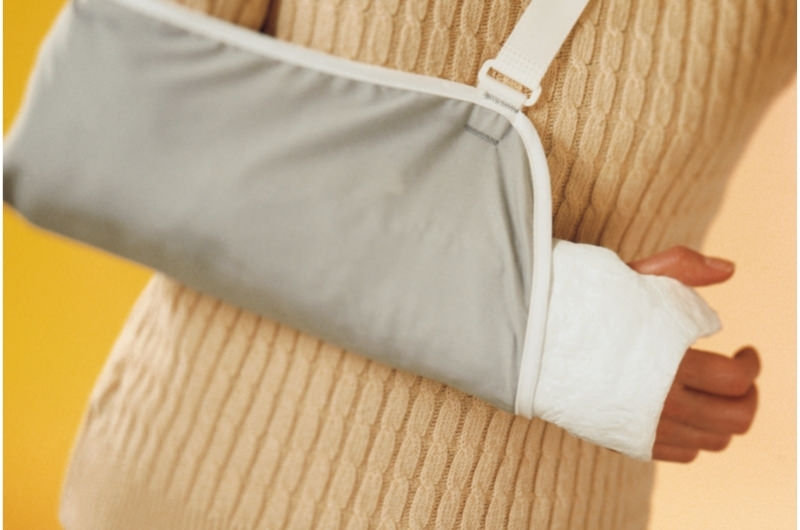While stepping or tripping during your non-weight-bearing injury sounds horrible, for most people, who experienced the same thing, they say it is no concern at all. Eventually, the cast keeps the injured part of your body from unnecessary movements during the recovery period. However, high fever, intense swelling or soreness, and discoloration of skin surrounding your cast may indicate complications on your injury. In addition, if you broke your bone while it is still healing, you may have to get another surgery.
Wearing a cast is surely disturbing and can get more annoying within a few weeks of your recovery period. However, it takes time for your broken bone to heal, and it needs the support that a cast could give.
You also have to make sure that your healing process will go as smoothly as possible to avoid any complications from your injury.
But, things can happen even if you don’t want them to, like falling off your crutches or tripping down to your broken foot or site of injury.
If you felt pain and soreness in the area after the accident, but it eventually subsided after a while, you should be fine. However, contact your healthcare provider about the issue and when unusual symptoms arise.
How does a cast work for an injury?
A cast can be made of plaster of Paris or fiberglass.
Both types work to support an injury while it is healing. However, depending on the severity of your injury, your doctor may have to do surgery to pin back the fractured bones and surrounding tissues or joints before they apply a cast.
A cast or splinter also works to relieve the pain after severely spraining your ankle or any joints in your body.
It usually takes 6-8 weeks before your doctor removes the cast. Your bone may completely heal and gain its full strength within 3-4 months, depending on your overall health.
How to take care of my injury or cast?
1. Elevate your cast

Keep your injured wrist or arm above heart level to avoid swelling. If the injury is on your leg, you may put a soft pillow underneath when sitting or lying down to improve blood circulation around the area.
You may also apply an ice pack (make sure it doesn’t wet the cast) to the site of injury to reduce swelling or numbness.
2. Avoid moving around
Don’t move around just yet, especially during your recovery period. Avoid activities like walking down the stairs, lifting heavy objects, or driving that may further damage your broken bone.
Wait until your doctor allows you to do simple exercises. By then, you may even walk on crutches while wearing a special boot.
3. Don’t scratch the itch
The skin underneath your cast could get very itchy and irritated. However, it will go away after a few days. Don’t try to scratch or poke anything on it, as it may loosen the cast or cause infection on your skin.
You may tap it gently or use a hairdryer and blow some air on it to relieve the itch.
4. Keep it dry and clean
Avoid going out in the rain or cancel swimming in the meantime. Water may damage your cast and could cause mold or bacterial growth leading to infection. You may use special covers for your cast when bathing.
Avoid putting lotions, oils, deodorant, or powder underneath it or on the surrounding area. Keeping the cast dry and clean from dust or dirt will also help prolong its stability.
5. Don’t adjust or remove the padding
Don’t adjust the position or remove anything from your cast. Consult your doctor if you feel it’s a bit loose.
Your cast must maintain its hold to support and protect your bone while it is healing. When it is time, your doctor will remove your cast with a special saw that works through it without touching or harming the skin underneath.
6. Take it slow and easy
Remember to take it easy, especially when you get your doctor’s permission to do simple motion exercises or to walk with crutches for the very first time. Make sure you have someone to assist you and avoid the bumpy or slippery ground.
If possible, do the exercises on a non-slip mat or practice walking inside the house on a carpet. Over time, when you have your cast removed, you may undergo physical therapy and finally start walking longer distances.
Signs and symptoms to look out for
The last thing you want is to have another set of treatments or surgery when you’re halfway through the recovery period. However, you must monitor your injury after falling or tripping while you still have your cast on.
Below are some common symptoms that may indicate complications after getting into an accident while your injury is still healing.
1. Fever
A sudden rise in your temperature, 38 °C (or 100.4°F) or higher, may indicate an infection on the site of your injury. If it doesn’t go down after taking a fever medicine or resting, call your doctor immediately.
2. Intense soreness or swelling
Pain and soreness are normal reactions you get after falling off to your injured bone.
If the pain is associated with intense soreness or swelling, this could be a sign that you have put too much pressure on your injury after falling off.
Also, watch for other symptoms like numbness, tingling, burning, or stinging pain.
3. Discoloration of skin
If you notice the skin around your cast turn bluish or reddish, it is not a good sign. Consult your doctor immediately to check if there is constriction of blood flow on your injury.
4. Stiffness of joints
Trouble moving your fingers or toes or the parts not covered in the cast might be the result of you putting weight on your injury while it hasn’t healed completely yet.
If it’s not the case of your cast being too tight, please tell your doctor immediately.
What should I expect?
If your accident caused your cast to crack or loosen up, please get it checked by your surgeon. They will need to fix or replace it to make sure your healing progress isn’t interrupted.
Moreover, if you did break your bone again (which rarely happens), your doctor may require another surgery within a specific time. They will have to assess your condition and wait until the swelling goes down.
Takeaway
Getting into another accident while still recovering from an injury is quite alarming, indeed. However, if you don’t encounter serious symptoms after falling on your cast, you shouldn’t worry too much.
Rest assured that your cast or splinter is doing its job well on protecting your broken bone from any shock or unnecessary movements.
You can always ring your doctor to lessen your worry and avoid getting anxious. However, watch your injury closely. If unusual swelling, discoloration of skin surrounding your cast, or intense pain occurs, seek medical help immediately.
Remember to follow your doctor’s advice seriously to prevent breaking your broken bone again. Avoid walking or moving around while you still have your cast on.
Your injury will get better within 6-8 weeks, considering that you’re healthy. Until then, you must take a rest and let your body heal your broken part.


